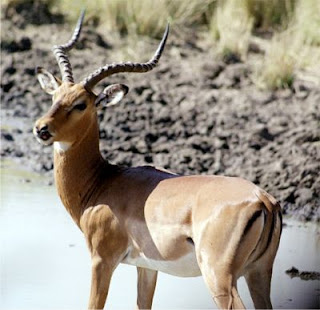True Wild Life | Impala | The impala is one of the many species of antelope that is found inhabiting the African wilderness. The impala is a medium-sized antelope that is primarily found in the savannas and thicker bush-land in the more southern parts of the African continent. The male impala are well-known for their curved horns that are able to reach lengths of around 90 cm hats bigger than the average impala individual! The male impala are known as rams, mainly due to the fact that the male impala use their horns when defending themselves both from other dominant male impala and from oncoming predators. The female impala do not have horns at all and they are known as ewes.
The impala is thought to be one of the most adaptable animals living in the African savanna, as the impala is able to change its eating habits with the seasons and depending on what is available in the near surroundings. Impala like to graze on fresh grass but will also nibble on shoots and foliage when there is no grass growing nearby.
The impala has many natural predators in the tough African landscape that include leopards, lions, cheetahs, crocodiles and hyenas. The impala though has a remarkable response when it feels threatened as the impala is able to jump over nine meters in distance and over two meters high. The impala is thought to do this in order to confuse its predators.
The average impala individual, lives for around 12 years in the wild although this varies a great deal as the impala is such substantial prey to many of the carnivorous African predators. Some impala individuals that have been bred in captivity have been known to get to more than 20 years old.




No comments:
Post a Comment